7th March – the date when Scotland became The Home of Golf?
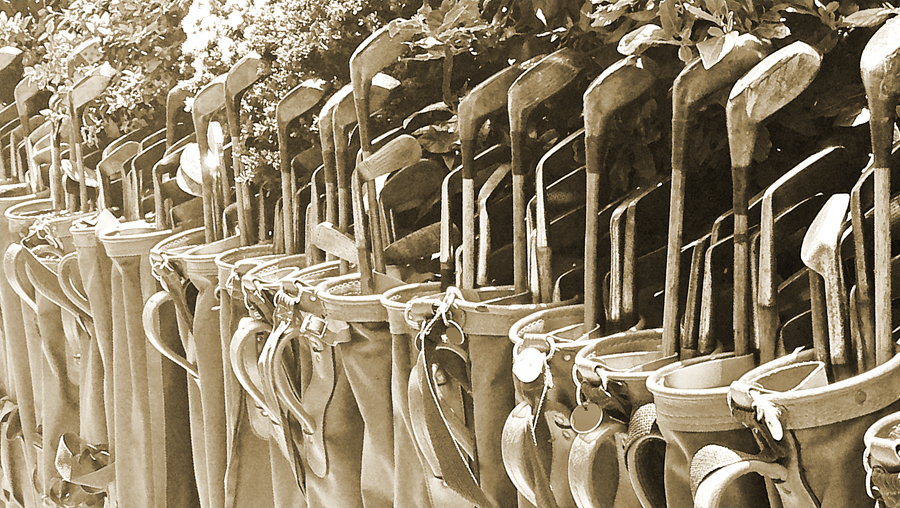 Today’s date, the 7th March, is an important date for Scottish Golf and, in the year 1744, the date was certainly a stepping stone in Scotland becoming known as The Home of Golf .
Today’s date, the 7th March, is an important date for Scottish Golf and, in the year 1744, the date was certainly a stepping stone in Scotland becoming known as The Home of Golf .
How did golf in Scotland start?
Games involving balls being hit with bent or curved sticks/clubs had been played for centuries throughout the world, dating well beyond Christianity and written records. So we Scots can hardly lay claim to inventing stick and ball games – but what about golf?
The Romans had a game called Paganica or Cambuca, which involved using a bent stick to hit a stuffed ball to an allocated target. The Romans may well have played it in Scotland, whilst they were here and some form of the game may have remained.
Others suggest that from the 10th century AD, the Chinese played a game called Chuiwan. The point of this game was to hit a ball to a flag/hole. It was, perhaps, Mongolian traders who brought it over to Europe.
Scots would have played the Dutch game of Kolf in their early trading with Holland. The French claim the origins of golf came from their games Chole and Jue de Mail à la Chicane amongst others.
Let’s not forget that Shinty has been played in Scotland for 2000 years. Any Shinty player would have the eye/skill for the game of golf.
Nobody can confirm which of these club/stick & ball games were the exact origins of golf. However, we can be fairly sure that some of them had an influence in the early evolution of the Scottish game.
When was the game first played in Scotland?
What we do know is that there is evidence of golf being played in the 15th century. The first mention of golf being played was in 1457, when James II banned both golf and football through an Act of Parliament. Both these games interfered with archery practice and military training.
It is likely that this reference to golf may have had different meanings for those living in towns and for those living in the country. Additionally, the Act is more likely to have applied to the lower classes and less so to the upper classes.
There would have been several forms of golf. One form on the open country spaces and the coastal links land where a golf hole may have stretched 400 yards or longer. Another form would be a shortened game in the tight spaces of church courtyards and the narrow streets of the towns. This is where a lot of damage and injuries would occur.
At the time, there was no definition of what a golf hole was, nor was there a defined number of holes per round. There were no courses, as we know them today, nor were there any rules, other than the golfer, who took the least amount of strokes, won the hole. The game was nothing more than an unregulated pastime, played in several different formats.
Over the 16th & 17th centuries the game developed throughout the open spaces, on the outskirts of towns but particularly on the links land along the east coast of Scotland. Golf courses, albeit only 3-6 holes at a time, were beginning to crop up across the country.
What was the Turning Point that defined golf as a Scottish game and Scotland as The Home of Golf?
By the turn of the 18th century, the game of golf was becoming very popular. It was becoming clear that the Scottish climate and links land terrain was ideal for the game. Golf was beginning to develop, as clubs started to form and competition started to grow.
In 1744 The Gentlemen Golfers of Leith Links asked the Edinburgh town council for a prize for an annual golf competition on the links. It would appear that these Edinburgh golfers had been jealous of the archers who had been presented with a silver arrow for competition by the town council in 1709.
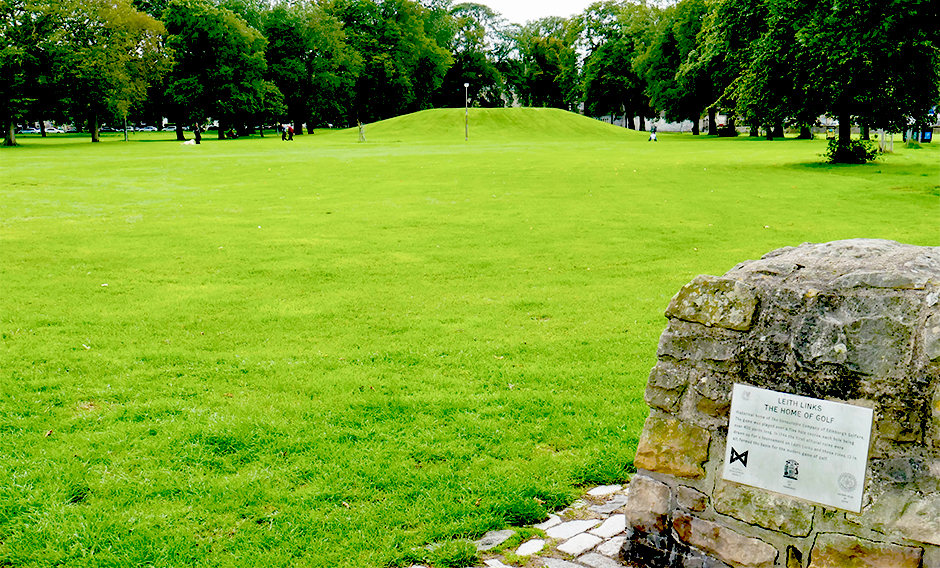
The Edinburgh town council presented the golfers with a silver golf club to be played for over Leith Links. This was on the understanding that The Gentlemen Golfers of Leith Links set down rules that would govern the game of golf. The event was to be the first ever ‘open’ golf competition worldwide, played under the first rules of golf.
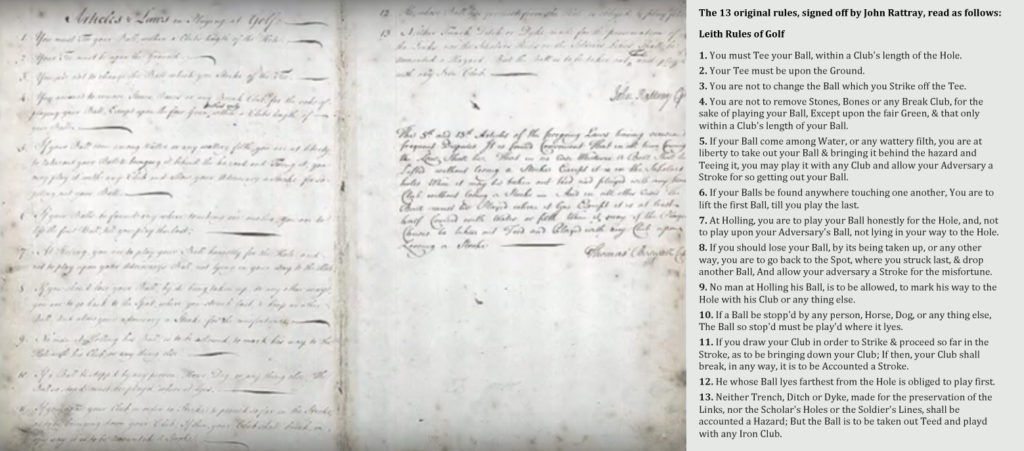
It was on the 7th March 1744 that The Gentlemen Golfers of Leith Links became the ‘Company of Edinburgh Golfers’ and they created the first 13 rules of golf (above). John Rattray, who won the first annual competition, signed off these rules, as captain. The ‘Company of Edinburgh Golfers’ later became the ‘Honourable Company of Edinburgh Golfers’ and now reside and play over Muirfield in East Lothian.
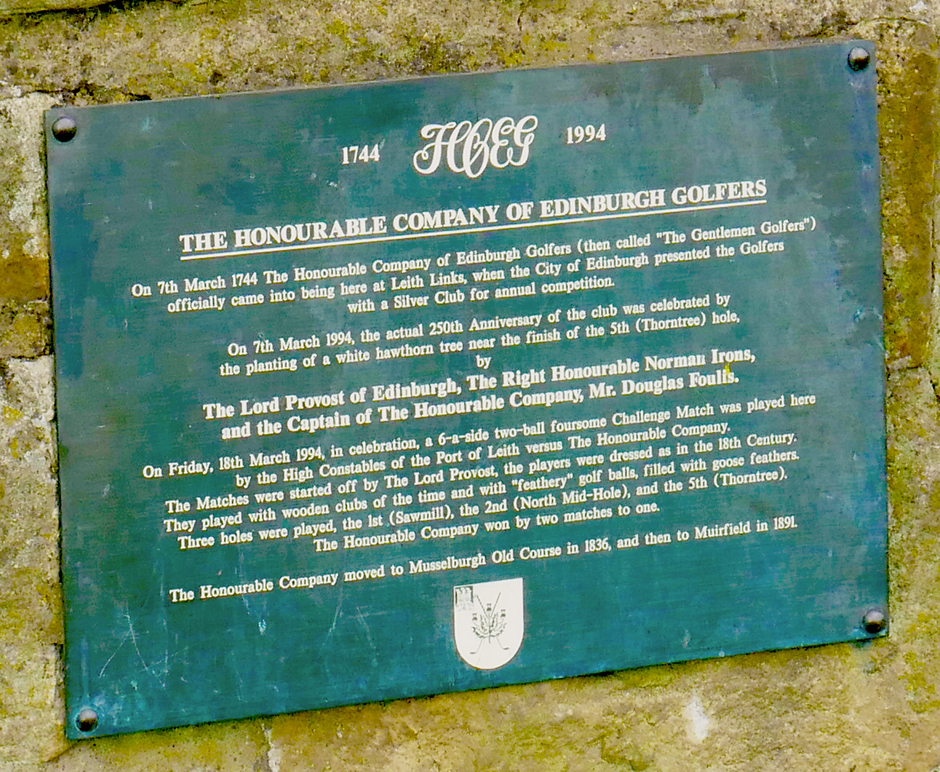
The fact that rules were drawn up was very important for the development of the game. It ensured regulation and set the benchmark for the game moving forward. These rule would form the basis of the modern game and ultimately lead to Scotland being viewed as The Home of Golf.
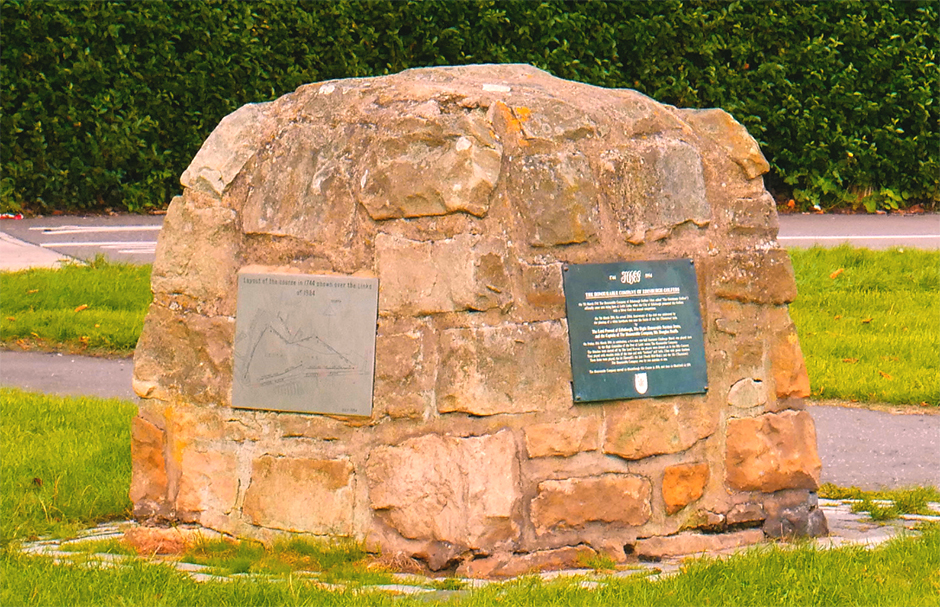
All that remains of golf on Leith Links today is a cairn with 3 commemorative plaques on it. The first shows the layout of the 5 holes of that first competition. The second plaque commemorating 250 years of The Honourable Company of Edinburgh Golfers 1744-1994 and a third plaque simply stating Leith Links The Home of Golf and a short description of the events of 1744.

274 years after the first rules of golf were drawn up at Leith Links, The Leith Rules Golf Society are marking the event, in the summer of 2018. They will unveil a bronze cast statue of John Rattray, surgeon, archer, winner of the first ‘open’ golf competition, captain of the ‘Company of Edinburgh Golfers’ and the gentleman golfer who signed off the first 13 rules of golf in 1744.
[Update as at 31 August 2018 – The Leith Rules Golf Society has moved back the unveiling of the John Rattray statue to 2019]
Whilst the precise origins of the game of golf are unclear, there can be no doubt that these first 13 rules of golf have their place in Golfing History. The signing of these rules, at Leith Links on the 7th March 1744, helped pave the way for Scotland to, not only develop the modern game of golf, but also be recognised as The Home of Golf.
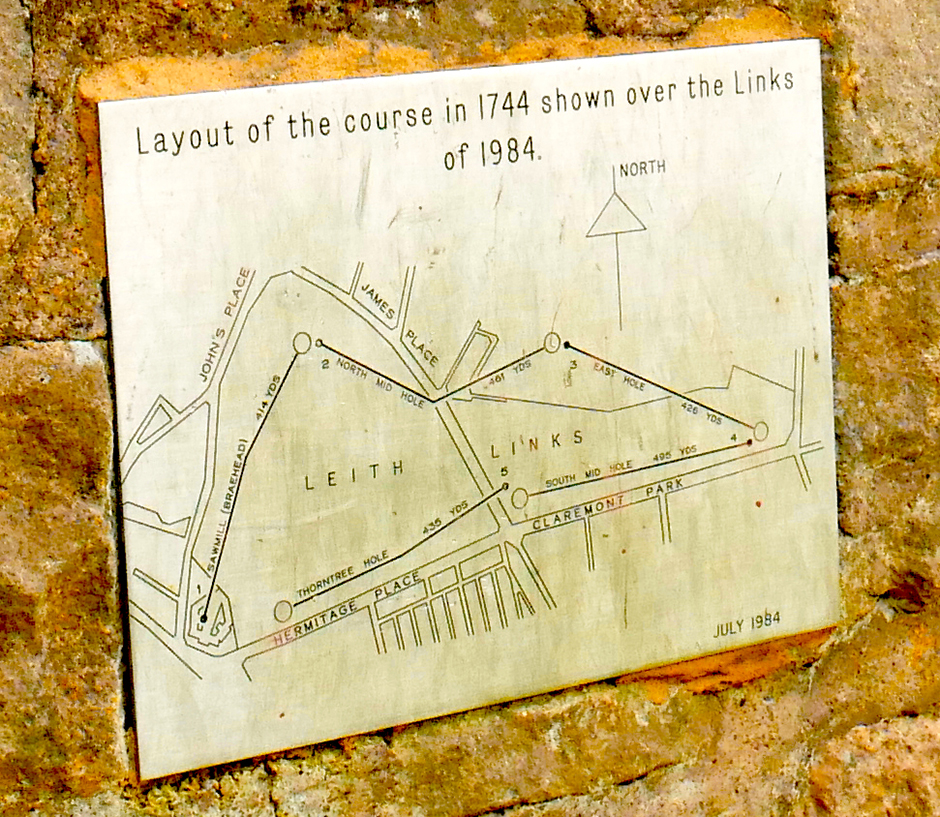
The Leith Rules Golf Society
The Leith Rules Golf Society has been fundraising for a statue of John Rattray to be located at the original first hole of Leith Links. It is hoped that the unveiling of this statue will be held in the summer of 2018.
More information on the Leith Rules Society can be found
on their website – http://www.leith-rules-golf.co.uk/statue.htm

